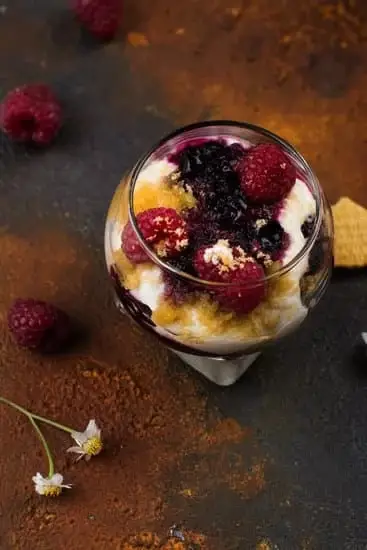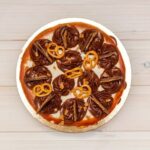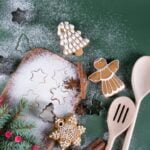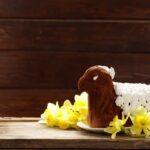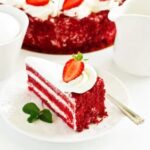When it comes to cake decorating, edible paint plays a crucial role in adding vibrant colors and intricate designs to baked creations. In this article, we will guide you on how to make edible paint for cake decorating, providing you with the knowledge and skills to elevate your dessert presentation.
By creating your own edible paint, you not only have full control over the ingredients used but also the opportunity to personalize the colors and shades to suit your specific design preferences.
Making your own edible paint allows you to ensure that only food-safe ingredients are incorporated into your creations. This is essential in ensuring the safety of those who will consume the decorated cake.
Additionally, by practicing proper hygiene during the process of making edible paint, you can guarantee that your final product is free from any contaminants or impurities. With these safety precautions in mind, you can confidently embark on your journey to mastering the art of cake decorating with homemade edible paint.
To get started on creating your own edible paint for cake decorating, it is important to gather all the necessary supplies and ingredients. From food coloring gels and vodka or extract for thinning out the paint to brushes and small containers for mixing, having these essential tools at hand will streamline the process of making edible paint. With this comprehensive list of supplies, you can be well-equipped to experiment with different colors, techniques, and applications when decorating your cakes.
Safety Precautions
When it comes to cake decorating, using edible paint adds a whole new dimension to your creations. Not only does it allow for more intricate designs and vibrant colors, but it also provides a safe way to add decorative elements to your cakes.
Making your own edible paint can be a fun and rewarding process, as you have full control over the ingredients used. By following proper safety precautions and using food-safe materials, you can ensure that your edible paint is not only beautiful but also safe to consume.
It is crucial to emphasize the importance of food safety when making edible paint for cake decorating. Only food-safe ingredients should be used in order to avoid any risk of contamination or adverse reactions.
This includes using gel food coloring or powdered food coloring specifically designed for culinary use, as well as other edible mediums such as vodka or lemon extract for thinning the paint. Additionally, maintaining proper hygiene throughout the preparation process is essential to prevent any cross-contamination and ensure the safety of the final product.
Ensuring that you have the necessary supplies and tools before starting to make edible paint is key to a successful baking session. Some essential items include small mixing bowls, measuring spoons, a palette knife or spatula for mixing, and clean paintbrushes specifically designated for food use.
Having these supplies on hand will make the process of creating edible paint smoother and more efficient. Now let’s move on to discussing the step-by-step guide on how to make edible paint at home using simple ingredients.
| Food Coloring Type | Edible Medium |
|---|---|
| Gel Food Coloring | Lemon Extract |
| Powdered Food Coloring | Vodka |
Essential Supplies
When it comes to cake decorating, edible paint can add a unique and creative touch to your creations. Making your own edible paint not only allows you to customize colors to suit your design needs but also gives you peace of mind knowing exactly what ingredients are being used. To get started on making your own edible paint for cake decorating, there are a few essential supplies that you will need to have on hand.
The first thing you will need is gel food coloring, which provides vibrant and concentrated colors without affecting the consistency of the paint. Additionally, you will need some clear alcohol such as vodka or lemon extract, which helps thin out the color and aids in drying quickly. Another essential ingredient is edible luster dust or powdered food coloring for adding shimmer and sheen to your designs.
In terms of tools, make sure to have small mixing bowls or containers for blending colors, along with various sizes of paintbrushes for different painting techniques. It’s also important to have palette knives for mixing and spreading the paint smoothly onto your cakes. With these essential supplies in your arsenal, you’ll be well-equipped to start creating beautiful and personalized designs using your homemade edible paint.
Recipe for Edible Paint
Creating your own edible paint for cake decorating is not only cost-effective but also allows you to have complete control over the ingredients used. Follow this simple step-by-step guide on how to make edible paint at home using basic supplies that you probably already have in your kitchen.
To make edible paint for cake decorating, you will need the following ingredients:
- Cornstarch
- Food coloring (gel or powdered)
- Water
Here’s a simple recipe for creating your own edible paint:
- In a small bowl, mix 1 tablespoon of cornstarch with 1 tablespoon of water to create a smooth paste.
- Add a few drops of food coloring to achieve your desired color intensity. Remember, a little goes a long way with food coloring, so start with just a few drops and add more as needed.
- Continue mixing until the color is evenly distributed throughout the mixture. If the paint is too thick, you can add a bit more water until it reaches your desired consistency.
Experiment with different color combinations by mixing primary colors to achieve custom shades for your cake decorating projects. Don’t be afraid to get creative and play around with different techniques when using your homemade edible paint.
Tips for Mixing Colors
When it comes to cake decorating, achieving the perfect color shades can make all the difference in creating a stunning and visually appealing cake. One of the key components in achieving vibrant and accurate colors is knowing how to mix your edible paint properly. Here are some tips and tricks on mixing colors for cake decorating:
Start With a Good Base
Before you even start mixing colors for your edible paint, it’s important to have a good base to work with. Use white edible paint as a base for light or pastel colors, as this will help the colors appear more vibrant. If you’re aiming for darker shades, start with a black or dark-colored base.
Use Gel Food Coloring
When mixing colors for edible paint, using gel food coloring is the way to go. Gel food coloring is more concentrated than liquid food coloring, so you’ll need less of it to achieve your desired shade. Start with a small amount of gel food coloring and gradually add more until you reach the color intensity you want.
Be Patient and Mix Gradually
Achieving the perfect color shade takes patience and practice. When mixing colors for edible paint, add a small amount of color at a time and mix thoroughly before adding more. This way, you can control the intensity of the color and avoid over-saturating your paint. Remember, you can always add more color but it’s difficult to lighten a shade once it’s too dark.
By following these tips for mixing colors when making edible paint for cake decorating, you’ll be able to create beautiful and eye-catching cakes that will impress your friends and family. Experimenting with different color combinations and techniques will help you develop your skills as a cake decorator and unleash your creativity in new ways. So get mixing, painting, and have fun decorating your next masterpiece.
Application Techniques
When it comes to cake decorating, using edible paint can elevate your creations to a whole new level. Whether you are a seasoned baker or just starting out, learning how to make edible paint for cake decorating is a valuable skill to have in your repertoire. Not only does making your own edible paint allow you to customize colors to match your design perfectly, but it also ensures that you are using safe and food-grade ingredients.
To begin exploring the world of edible paint application techniques, let’s first gather the necessary tools and supplies you will need. Here is a list of essential items you should have on hand:
- Food-safe coloring gel or powder
- Clean paintbrushes designated for food use
- Small containers for mixing colors
- Palette knives for blending colors
- Cake stencils for creating intricate designs
- Splatter brush for achieving splatter effects
Once you have gathered all the supplies, it’s time to delve into different painting techniques that can take your cake decorating to the next level. Here are some common application techniques used in edible painting:
- Brush Strokes: Using various sizes of brushes, you can create different strokes such as lines, swirls, and shapes on your cakes.
- Stenciling: Place a stencil over the cake and apply edible paint with a brush or airbrush for precise patterns and designs.
- Splattering: Dip a splatter brush into thinned-out edible paint and flick it over the cake for a fun splatter effect.
By mastering these application techniques, you can unleash your creativity and bring your cake designs to life with vibrant colors and intricate details. Experiment with different methods to see which ones work best for your particular design aesthetic.
Storage and Shelf Life
Edible paint is a versatile and essential tool in cake decorating, allowing for intricate designs and vibrant colors on baked goods. Making your own edible paint at home not only gives you greater control over the ingredients used but also ensures that it is safe for consumption. By following a simple recipe and taking the necessary precautions, you can create stunning works of art on your cakes.
When making edible paint for cake decorating, it is crucial to use food-safe ingredients and maintain proper hygiene throughout the process. This includes using gel food colors specifically designed for culinary use, as well as ensuring that all utensils and surfaces are clean. By following these safety precautions, you can confidently decorate your cakes without any concerns about the paint being harmful.
Essential supplies for making edible paint include gel food colors, clear alcohol (such as vodka or lemon extract), small mixing bowls, and clean paintbrushes. These simple ingredients can be easily found at most stores or online shops catering to baking supplies. By having these items on hand, you can quickly whip up a batch of edible paint whenever inspiration strikes.
| Ingredients | Supplies |
|---|---|
| Gel food colors | Vodka or lemon extract |
| Clean paintbrushes | Small mixing bowls |
Whether you are a novice or experienced baker, learning how to make edible paint for cake decorating opens up a world of creative possibilities. Experimenting with different colors and techniques will help you refine your skills and develop your unique style. By understanding the basics of edible paint preparation and application, you can take your cake decorating to the next level and impress family and friends with your beautifully decorated creations.
Troubleshooting
Grainy Texture
One common issue that may arise when making edible paint for cake decorating is a grainy texture. This can happen if the ingredients are not properly mixed or if the paint is not strained before use. To fix this issue, simply strain the edible paint through a fine-mesh sieve or cheesecloth to remove any lumps or grains. Make sure to mix the ingredients thoroughly until they are smooth and well-combined to prevent any grainy texture.
Separation of Ingredients
Another common problem when making edible paint is the separation of ingredients, where the liquid and solid components do not blend well together. To avoid this issue, make sure to use emulsifiers like food-grade glycerin or corn syrup in your recipe to help bind the ingredients together. If separation still occurs, try adding a small amount of additional emulsifier and mixing well until the paint has a smooth consistency.
Fading Colors
Sometimes edible paint may lose its vibrancy or fade when applied to cakes, especially if exposed to light or heat for prolonged periods. To prevent colors from fading, store your edible paint in a cool, dark place away from direct sunlight.
Additionally, consider using gel food coloring instead of liquid dye for more intense and long-lasting color shades. If your colors are still fading after application, you can try applying multiple layers of paint and allowing each layer to dry completely before adding another coat for more vibrant results.
By addressing these common issues and following these troubleshooting tips, you can ensure that your homemade edible paint turns out perfectly every time. Experiment with different recipes and techniques to create beautiful designs on your cakes and unleash your creativity in cake decorating with custom-made edible paint.
Conclusion
In conclusion, learning how to make edible paint for cake decorating can truly elevate your baking game. Not only does it allow for more creativity and customization in your designs, but it also ensures that you are using safe and food-grade ingredients. By following the safety precautions, gathering the essential supplies, and utilizing the recipe provided in this guide, you can easily create your own edible paint at home.
Experimenting with mixing colors and applying different techniques such as brush strokes or stenciling can help you achieve stunning results on your cakes. The tips shared on achieving the perfect color shades will come in handy, especially for those who are new to cake decorating. Remember that practice makes perfect, so don’t be afraid to try out new methods and refine your skills along the way.
Overall, making your own edible paint not only allows for a more personalized touch to your cakes but also gives you full control over the ingredients used. Whether you are a seasoned baker or just starting out, trying your hand at creating edible paint is a fun and rewarding way to enhance your cake decorating skills. So why not give it a try today and see the beautiful creations you can come up with?
Frequently Asked Questions
Can You Make Your Own Edible Paint?
Making your own edible paint is quite simple and can be a fun DIY project. You can create edible paint using ingredients like cornstarch, corn syrup, food coloring, and water. Mix these ingredients together until you achieve the desired consistency and color for your paint.
How Do You Make Edible Paint With Food Coloring for Cakes?
To make edible paint with food coloring for cakes, you can start by mixing food coloring with clear alcohol such as vodka to create a concentrated solution. Then mix this solution with corn syrup or clear piping gel until you reach the desired paint consistency. This edible paint can be used to decorate cakes and other baked goods.
How Do You Make Fake Edible Paint?
Creating fake edible paint involves using non-toxic materials that are safe to ingest but not necessarily intended for consumption. You can mix powdered sugar or cornstarch with food coloring and a small amount of water to create a paint-like consistency that is safe for decorative purposes on items like cookies or gingerbread houses.
Remember that while this fake edible paint is non-toxic, it may not taste great due to the unusual texture and flavor combination.

Welcome to our cake decorating blog! My name is Destiny Flores, and I am the proud owner of a cake decorating business named Cake Karma. Our mission is to provide delicious, beautiful cakes for all occasions. We specialize in creating custom cakes that are tailored specifically to each customer’s individual needs and tastes.

